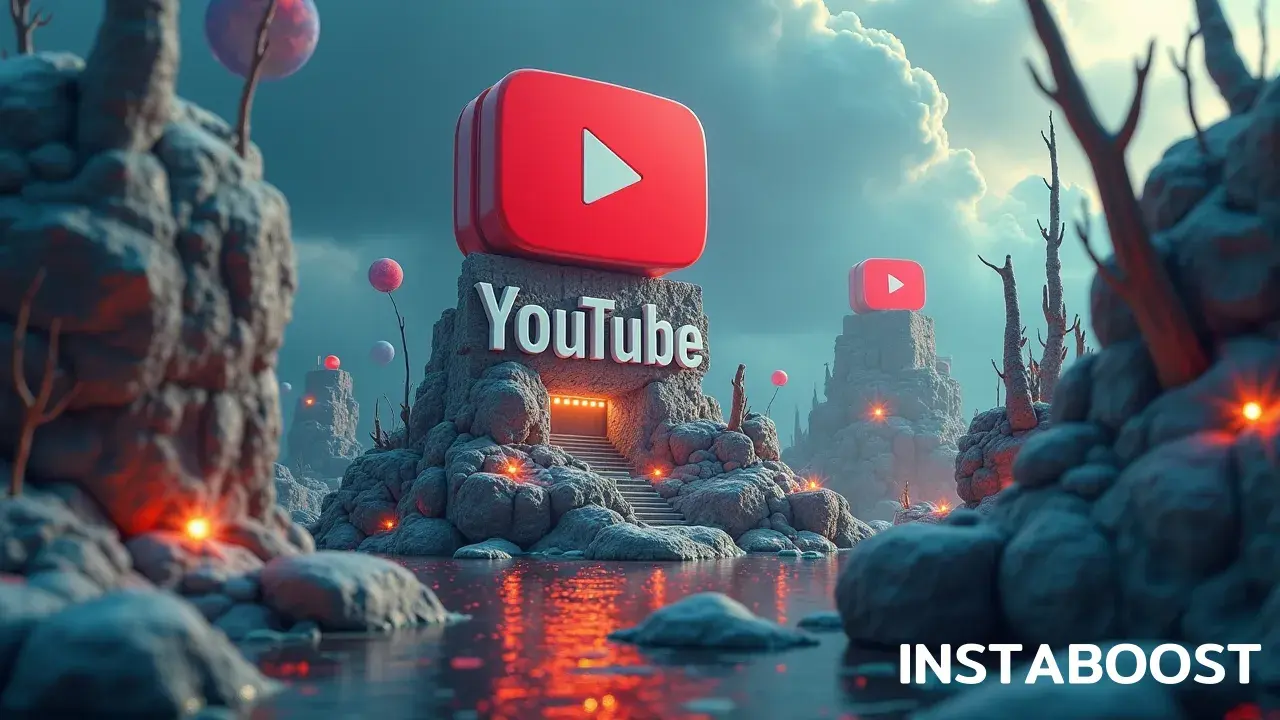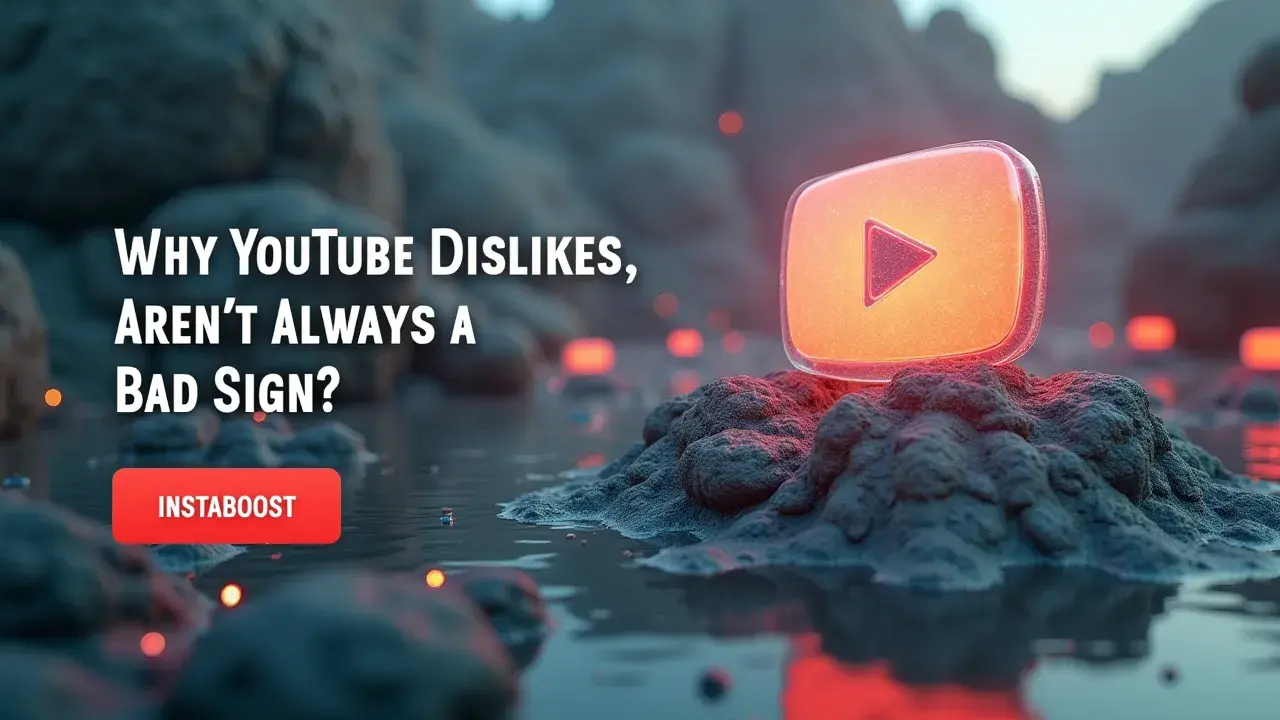Why Aren’t YouTube Dislikes Always a Bad Sign?
Dislikes can signal active engagement rather than simple rejection. They often spark discussion in comments, surface strong viewer reactions, and reveal where content or messaging might need adjustment. When interpreted alongside watch time and audience interaction, dislikes help refine a video strategy instead of derailing it. The smart path is to read the signal, iterate on content, and align future videos with audience expectations.
Rethinking the Meaning Behind YouTube Dislikes
When you come across a YouTube video with a lot of dislikes, it’s easy to assume the creator made a mistake or that everyone is against the video. But when you think about how YouTube works, those dislikes actually say something different. The algorithm isn’t picky about whether people like or dislike a video – it’s more focused on whether people are interacting at all. For someone trying to grow a channel, that kind of activity, even when it’s negative, still counts as a sign that the video is reaching people.
Dislikes can mean the video sparked questions, challenged someone’s expectations, or ended up in front of viewers who wouldn’t normally watch it. It isn’t always a sign of failure; sometimes it means the video struck a nerve or stood out in some way. This can even help a video show up more in recommendations or trending sections, which means it ends up reaching new viewers.
For creators or marketers (including those who use services like INSTABOOST), seeing dislikes is also just part of figuring out how to gain traction on YouTube, since what YouTube actually rewards is engagement, whether that’s positive or not. Looking past the numbers on the surface, you start to notice that negative feedback can start conversations, highlight what matters to people, or give a video some momentum that silence wouldn’t.
For creators or marketers (including those who use services like INSTABOOST), seeing dislikes is also just part of figuring out how to gain traction on YouTube, since what YouTube actually rewards is engagement, whether that’s positive or not. Looking past the numbers on the surface, you start to notice that negative feedback can start conversations, highlight what matters to people, or give a video some momentum that silence wouldn’t.

Dislikes and the Credibility Test
Building trust on YouTube isn’t really about making a big impression or chasing after likes. It’s more about the way someone shows up over time, in the little choices they make. For example, when a video gets a lot of dislikes, it’s easy to look at that number and wonder if the creator can be taken seriously.
But if you think about it, trust doesn’t come from never being criticized. It has more to do with how consistently someone shares what they know, how they respond to people, and whether they’re really present in the way they talk to their viewers. Sometimes, a high number of dislikes just means that the creator isn’t shying away from hard topics or opinions that make people uncomfortable. Those reactions, even when they’re negative, can mean that viewers actually care enough to engage instead of just clicking away. The YouTube algorithm, and people in general, tend to notice videos that get people talking, even if the discussion is tense or split.
A lot of creators who are respected now have gone through moments where their ideas were questioned or criticized, and instead of ignoring those responses, they paid attention to what people were saying in the comments. With so much clickbait and things that turn out to be misleading, there’s something to be said for someone who doesn’t try to hide from criticism. And I’ve even seen cases where an openness to feedback is reflected in the steady increase channel subscribers over time, which seems to follow when a creator is willing to listen, even to criticism. If a creator is willing to listen to feedback – even when it comes in the form of dislikes – it usually means they’re interested in an honest conversation, not just approval.
Dislikes and comments, together, end up being a kind of open review, and creators who keep an eye on that feedback often find ways to make what they’re doing clearer and more trustworthy. It’s not always easy to remember, but dislikes don’t have to be a mark against someone. Sometimes they’re evidence that what’s happening is real, and that people are paying attention for reasons that matter.
Turning Dislikes into Strategic Data
A lot of people who make videos end up skipping this step, then later wonder why things feel stuck or flat. But if you actually go back and look at your YouTube dislikes, there’s more going on than just a bad feeling. Dislikes are a kind of feedback, almost like having a group of people in the room who aren’t afraid to tell you what didn’t land. Instead of focusing only on getting likes or feeling discouraged by thumbs-downs, you can treat every reaction – even the negative ones – as a way to learn something about your audience. It can be helpful to ask yourself what might have sparked that response. Was it something in your script, the way you edited your video, or maybe the thumbnail you used?
Noticing these details tells you something about who’s watching and what they’re reacting to, even when it isn’t what you hoped. A lot of creators hit a wall here – they see dislikes as the end of the road, when actually there’s a lot to dig into. Every reaction, including dislikes, tells YouTube that people are paying attention, which can actually help your video reach more viewers, even if the feedback isn’t all positive. If you start to see a pattern in the types of videos or topics that bring in more dislikes, it’s worth looking closer instead of trying to erase those signals. You could use a tool like INSTABOOST to track when engagement goes up or to see which comments line up with changes in your video stats, or even just to jumpstart YouTube likes when you notice certain uploads lagging behind. Over time, you start to see dislikes as hints about what’s working and what isn’t, instead of taking them as a sign you’ve failed. That shift – from reacting emotionally to thinking more about what you’re learning – is where some creators start to figure things out, while others keep spinning their wheels.
Dislikes Aren’t Always a Red Flag
Getting a bunch of dislikes on a YouTube video stings, and I know it’s easy to see them as a sign you messed up somewhere. But not every dislike means your video is bad. Sometimes it just means you picked a subject that hits a nerve or goes against what people expect. For example, if you post a review calling out problems with a popular phone, or share a documentary that questions something most viewers take for granted, you’ll probably get more pushback than usual.
But that kind of reaction isn’t always negative. YouTube’s system notices when people interact with your video, even if it’s through a dislike. The fact that someone watched enough to care, and then decided to click dislike instead of scrolling past, actually means your video got through to them on some level. That’s the part a lot of people miss – videos that trigger a strong response, even a critical one, can end up being shared more, talked about more, and reaching people who wouldn’t have seen them otherwise. If you look at some of the most widely discussed videos online, a lot of them have their fair share of dislikes. Even companies like INSTABOOST point out that attention, even when it’s not positive, can help a video become visible. In many cases, it’s these moments of engagement that increase watch time naturally. So, when you see those dislikes, you don’t have to see them as the end of the story. Sometimes they’re a starting point for something that keeps going.
Making Every Signal Count
Getting dislikes on your YouTube videos can be tough at first, and it’s easy to take them personally. Over time, though, they start to feel like just one piece of all the feedback coming in. On YouTube, even a dislike means someone watched and cared enough to react, and the algorithm treats any engagement – good or bad – as activity. If your aim is to grow your channel, it turns out the videos that get mixed reactions are sometimes the ones that reach further, just because they get people talking. That’s not to say you should look for controversy, but it helps to notice if certain subjects or ways of explaining things get people interested, even if they don’t all agree.
When you notice certain videos attract both strong likes and dislikes, that actually tells you something. It’s not just about counting comments or thumbs-up, either; sometimes people share videos outside of YouTube, and that can show as much interest as any other number. Maybe there’s something in your approach, or your choice of topic, that splits people but keeps them watching.
All of this feedback – even the negative stuff – can point you toward what connects or doesn’t. Channels that get people talking, even if not everyone is happy, usually seem to know themselves better. If you hide dislikes or focus too much on pleasing everyone, you can end up losing what makes your channel work. It’s probably more useful to pay attention to why people react the way they do, and let that shape what you try next. Dislikes are just another data point – a way to see what fits, or what you might decide to change or leave behind
Dislikes as Catalysts for Growth
Seeing a sudden rise in dislikes on a YouTube video doesn’t always mean you made a mistake. It’s often just more information about what’s connecting and what isn’t. Sometimes it’s a sign that the topic is stirring up reactions, or that something you said wasn’t as straightforward as you thought.
Even if it’s uncomfortable, there’s usually something useful in that response. Looking at things like watch time or where viewers click away can show you more about what’s happening. Sometimes it comes down to the way the title set expectations, or that your take surprised people. Dislikes aren’t just about people being annoyed; they also mean people are watching and reacting. I’ve seen some channels try adjusting things like their upload schedule or testing a YouTube bundle promotion while looking at these numbers. When you take time to reply thoughtfully, tweak how you explain things, or just talk with people in the comments, it can help shape the channel. Every response – likes, dislikes, comments, shares – gives you something to work with.
Even negative reactions can get your video in front of more people, which isn’t always obvious at first. Most channels seem to improve by paying attention to the parts that don’t go smoothly, just as much as the parts that do...
Even negative reactions can get your video in front of more people, which isn’t always obvious at first. Most channels seem to improve by paying attention to the parts that don’t go smoothly, just as much as the parts that do...















